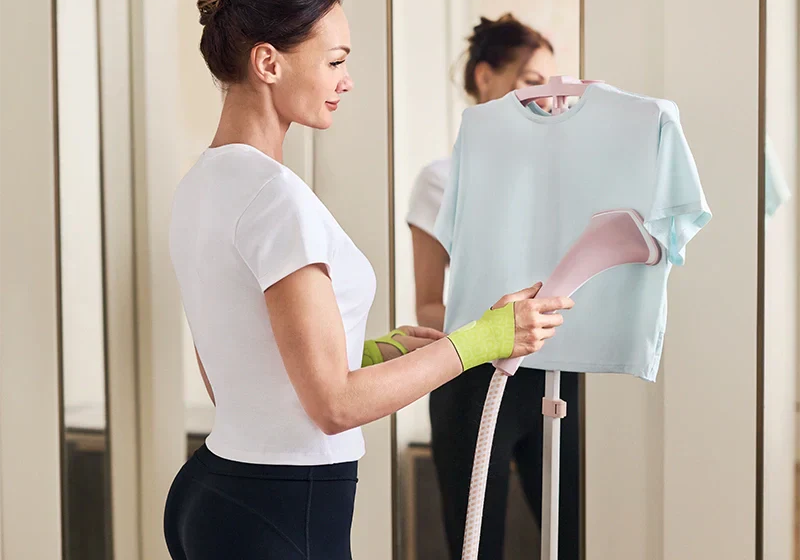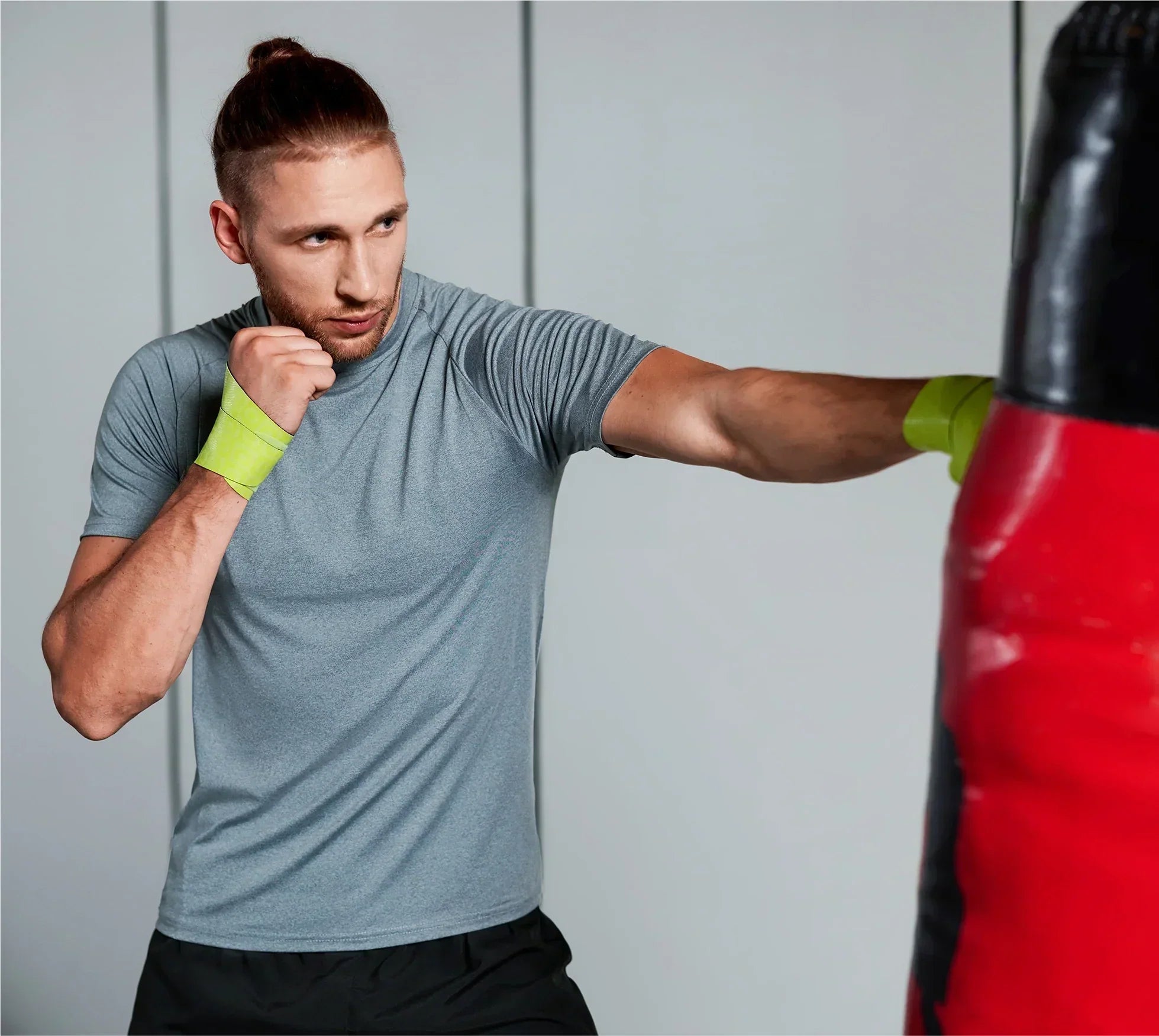When Fitness Meets Menopause: Why Every Step Feels Difficult
For many women over 50, menopause doesn’t just affect hormones—it also makes starting or sticking to a fitness routine feel frustratingly hard.
Even when the benefits of exercise are well understood, the body often sends back protest signals: aching joints, muscle fatigue, or strange pains that never used to be there. What begins as a good intention—getting healthier—often ends with discouragement after the first few attempts.
This hesitation can lead to a harmful cycle: the less you move, the weaker your body becomes, and the harder it is to move again.
The good news? Menopause-related discomfort can be managed. With the proper brace and support, women can exercise more safely, reduce pain, and regain confidence in their physical strength.
What’s Really Happening: How Menopause Affects Your Ability to Move
Menopause brings about hormonal changes—especially the drop in estrogen—that directly impact physical performance and recovery. Here’s how:
1. Weaker Bones and Joints
Estrogen is essential for bone health. Its decline speeds up bone loss by 1%–3% each year, raising the risk of osteoporosis. Joint fluid production drops, and cartilage becomes thinner. This results in less cushioning and more joint friction and pain during motion.
2. Loss of Muscle Mass and Strength
Menopause accelerates protein breakdown, causing muscles to shrink at a rate of 0.5%–1% per year. With less muscle comes lower metabolism and greater fatigue, making daily tasks and workouts feel more draining.
3. Increased Sensitivity to Pain
Estrogen has natural anti-inflammatory effects. When levels decrease, the body becomes more reactive to even mild discomfort, making workouts feel riskier than they actually are. Even light exercise—like squats or yoga stretches—can feel intimidating.
But stopping movement altogether will only worsen these issues.
3 Common Barriers That Keep Menopausal Women from Exercising
Beyond the physical shifts, mental and emotional challenges often play a big role:
1. Fear of Lingering Pain
When one workout leaves you sore for three days, it’s easy to assume your body just can’t handle it—when in fact, it may just need the right support.
2. Lack of Energy and Motivation
Fatigue from poor sleep, hot flashes, or mood changes can sap motivation. In fact, around 68% of menopausal women report feeling too tired to exercise regularly.
3. Anxiety About Injury
Worrying about falling, twisting a knee, or pulling a muscle can create enough hesitation to stop you from starting in the first place.
Fortunately, brace and support products can help you overcome these hurdles in a simple but effective way.
How the Right Brace and Support Can Help You Move Again
Braces and supports aren't just for recovery after injuries—they can actively prevent discomfort, boost confidence, and make regular movement feel possible again.
1. Joint Stabilization
Knee braces with open patella design can reduce pressure and friction, making activities like stair climbing or squats more manageable. Wrist supports keep your hands stable and prevent strain during yoga, lifting, or even daily chores. Back supports help stabilize your spine, especially if weak core muscles are causing lower back fatigue or discomfort.
Real Example: Yanelys Dominguez had to quit brisk walking because of chronic knee pain. After using the guard x knee brace, she resumed her walking routine and experienced a 70% drop in pain symptoms.
2. Muscle Support and Circulation
Compression socks aid blood flow and help reduce leg swelling or fatigue after activity. Elastic back supports provide structure while allowing for natural movement—ideal for walking, Pilates, or stretching.
3. A Confidence Boost You Can Feel
Beyond physical benefits, brace and support products offer psychological reassurance. Knowing your joints are secure reduces anxiety, making it easier to follow through on fitness goals.
Studies show that women who use braces during workouts are 45% more likely to stick to their fitness routines.
How to Choose the Right Brace and Support: 4 Smart Rules
Not all supports are equal. Choosing the right one for your body and your needs is essential:
1. Buy Based on Your Body’s Needs, Not Trends
-
Knee pain? → Opt for an open-patella knee brace with silicone rings.
-
Wrist weakness? → Choose a wrap-style support with adjustable tension.
-
Lower back issues? → A contoured lumbar support with breathable fabric can make a big difference.
2. Prioritize Breathable, Comfortable Materials
A spandex-nylon blend ensures elasticity and ventilation. Look for anti-slip silicone strips to keep the support in place during movement.
3. Get the Fit Just Right
A well-fitting brace should allow you to slip one finger underneath it. It shouldn’t slide around or leave deep marks. Do a few squats or arm circles to test its stability and comfort.
4. Stick With Trusted Brands
Choose products that are certified or made by companies with research and development backing. Avoid cheap, rigid braces that may restrict blood flow or increase discomfort over time.

Final Thoughts:
Braces and Supports Aren’t a Compromise—They’re a Smarter Way to Move
You don’t need to power through pain to stay active. A high-quality brace or support helps you move with more ease, reduce the risk of injury, and stay consistent with your fitness goals.
Menopause may slow you down, but it doesn't have to stop you.
With the right support—literally—you can move forward with confidence, strength, and renewed energy.
So don’t wait. Start with the brace or support that fits your needs and let this be the beginning of your healthiest chapter yet.






